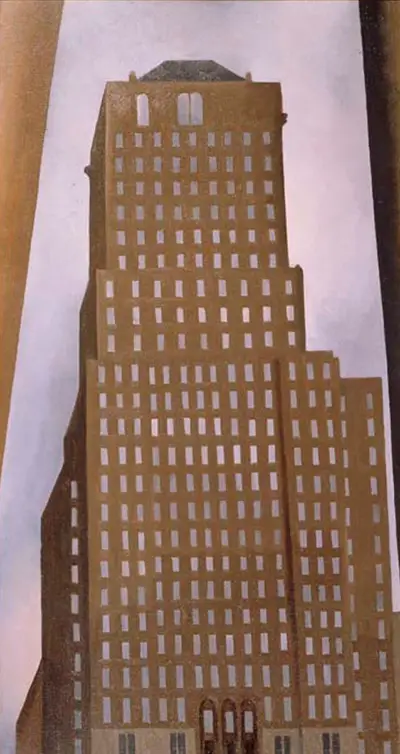The artist and her then-husband stayed for several years, alternating it with their home at Lake George. Her lofty studio presented stunning views over New York's southern, eastern and northern aspects, inspiring around twenty-four more cityscapes in the same Precisionist style between 1925 and 1929. Stimulated by this high vantage point above the noise of the busy streets below, and fascinated by the very modern but enigmatic high-rises springing up around her, she came to believe that feeling this buzz was essential to conveying it. Buildings were perceived from a low level so that here, the Shelton towers above its surroundings, looming over mere mortals, with perhaps a warning hint of trends to come. Small windows cover the Shelton's imposing facade, emphasising its height, while suggesting a dark interior. The overcast sky matches the sombre colouring of the walls, and gives pause for thought.
Georgia O'Keeffe was also a photographer. Interested in new techniques, she copied her friend Paul Strand's method of cropping prints, and was one of the first to use this in paintings, producing close-ups that were detailed and yet abstract. Shelton Hotel New York No. 1 resembles a cropped photo, and indeed, is very like a contemporary postcard of the hotel. The misty atmosphere of the later cityscapes indicated that O'Keeffe was becoming disillusioned with city life and the urban landscape. In the 1930s, she moved to New Mexico, and returned to the large studies of nature and terrain that she had previously produced at home in Virginia.
Arthur Wesley Dow (1857-1920) was an early influence on Georgia O'Keeffe. He believed that works of art could be created using mass, line and colours to bring elements of the subject together, leading O'Keeffe to discard what she had done before 1915, and instead to experiment with charcoal and abstract art. Her large and distinctive canvasses became a means of personal self-expression, while at the same time bringing them to life for the viewer, whether in nature and bold landscapes, or in cityscapes such as Shelton Hotel New York No. 1. Georgia O'Keeffe led the way for American modernism, for the aspirations of female artists and for the feminist art movement, with the Museum of Modern Art holding its first retrospective for a woman in 1946. As the first woman to earn respect on the 1920s New York art scene, she remains one of the twentieth century's most iconic artists.

